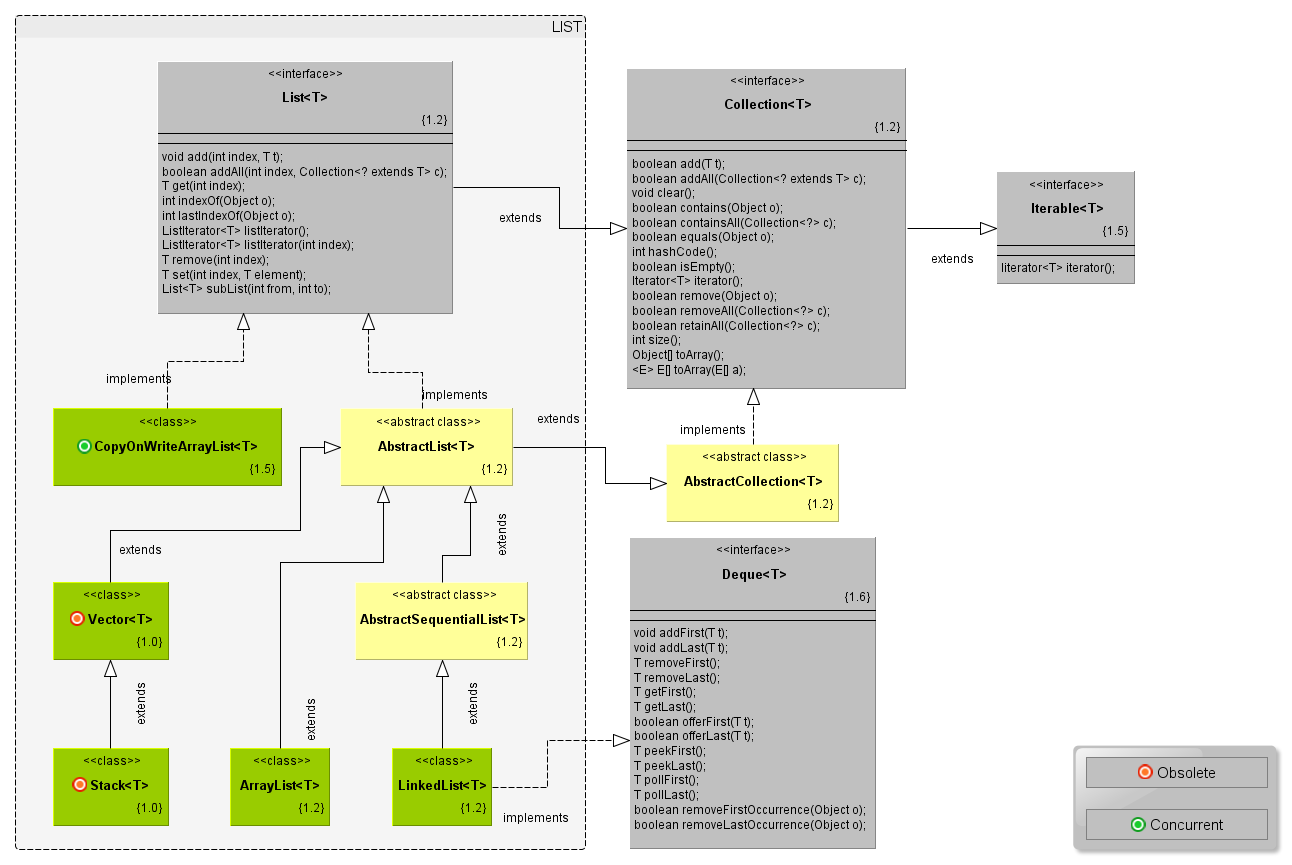LIST
Ordered collection, also known as a sequence.
Duplicates are generally permitted.
Allows positional access.
Extends the Collection interface.
Skeletal List implementation backed by
a random access data store (such as an array).
Skeletal List implementation backed by a
sequential access data store (such as a linked list).
Resizable array implementation of the List interface (an unsynchronized Vector).
The best all-around implementation of the List interface.
Synchronized resizable array implementation of the List interface with additional legacy methods.
The Stack class represents a last-in-first-out (LIFO) stack of objects.
Doubly-linked list implementation of the List interface.
Provides better performance than the ArrayList implementation if elements are frequently inserted or deleted within the list.
Also implements the Deque interface.
When accessed through the Queue interface, LinkedList acts as a FIFO queue.
A List implementation backed by an copy-on-write array.
All mutative operations (such as add, set, and remove) are implemented by making a new copy of the array.
No synchronization is necessary, even during iteration, and iterators are guaranteed never to throw ConcurrentModificationException.
This implementation is well-suited to maintaining event-handler lists (where change is infrequent, and traversal is frequent and potentially time-consuming).
A double ended queue, supporting element insertion and removal at both ends.
Extends the Queue interface.
Implementing this interface allows an object
to be the target of the "foreach" statement.
A group of objects.
No assumptions are made about the order of the collection (if any)
or whether it can contain duplicate elements.
Skeletal Collection implementation that is
neither a set nor a list (such as a "bag" or multiset).
Obsolete
Concurrent
extends
extends
implements
extends
extends
extends
extends
implements
extends
extends
implements
implements

